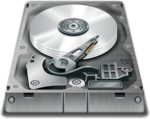Graphics: Mesa 20.1.5, Intel and AMD

-
mesa 20.1.5
Hi all, I'd like to announce Mesa 20.1.5, the fifth bugfix release for the 20.1 branch. The next bugfix release is planned for 2 weeks from now, on 2020-08-19. Cheers, Eric
-
Mesa 20.1.5 Released For The Latest Stable Open-Source Vulkan / OpenGL Drivers
Mesa 20.1.5 provides the latest stable open-source Vulkan/OpenGL graphics drivers for the Linux desktop as the newest bi-weekly milestone.
Mesa 20.2 remains under development as this quarter's feature release due out in about one month's time. Mesa 20.2 is running behind schedule as it should have been branched around the end of July but has yet to happen. In any case, more Mesa 20.2 feature work continues to land and more than likely will ship sometime in September. But until that occurs, Mesa 20.1 is the latest stable series.
-
Intel Workaround For Graphics Driver Regression: "The Platform Problem Going Crazy"
Sent out over the weekend was a patch series for the Intel Linux kernel graphics driver entitled "Time, where did it go?" This set of 42 patches aims to provide incremental improvements to the driver to offset a performance regression in Linux 5.7 that Intel hasn't been able to track down. This increased complication of the driver to offset the regression is now under the microscope.
The set of 42 patches by longtime Intel open-source developer Chris Wilson provides incremental improvements to reduce the execution latency. He was upfront that the intent of these improvements are to "basically offsets the small regressions incurred when compared to [Linux kernel] 5.7."
-
RadeonSI Resorts To Disabling SDMA For GFX9/Vega Due To APU Issues
AMD's RadeonSI Gallium3D driver has resorted to disabling SDMA (System DMA) async DMA engine support for all GFX9/Vega hardware due to issues plaguing some APUs.
While SDMA has the potential of helping performance, GFX9 (Vega) is now seeing the support disabled due to bugs seeming to only affect APUs. Though it's not entirely surprising as the open-source AMD Radeon Linux driver also is not enabling SDMA at this point for GFX8 (Polaris) or GFX10 (Navi) hardware either.
Opened three months ago was the merge request for disabling SDMA on GFX9 and to back-port it to the stable series as well. Longtime AMD open-source developer Marek Olsak noted, "This is somewhat a radical step. All opinions welcome."
-

- Login or register to post comments
 Printer-friendly version
Printer-friendly version- 3090 reads
 PDF version
PDF version
More in Tux Machines
- Highlights
- Front Page
- Latest Headlines
- Archive
- Recent comments
- All-Time Popular Stories
- Hot Topics
- New Members
digiKam 7.7.0 is released
After three months of active maintenance and another bug triage, the digiKam team is proud to present version 7.7.0 of its open source digital photo manager. See below the list of most important features coming with this release.
|
Dilution and Misuse of the "Linux" Brand
|
Samsung, Red Hat to Work on Linux Drivers for Future Tech
The metaverse is expected to uproot system design as we know it, and Samsung is one of many hardware vendors re-imagining data center infrastructure in preparation for a parallel 3D world.
Samsung is working on new memory technologies that provide faster bandwidth inside hardware for data to travel between CPUs, storage and other computing resources. The company also announced it was partnering with Red Hat to ensure these technologies have Linux compatibility.
|
today's howtos
|









.svg_.png)
 Content (where original) is available under CC-BY-SA, copyrighted by original author/s.
Content (where original) is available under CC-BY-SA, copyrighted by original author/s.

Recent comments
1 year 11 weeks ago
1 year 11 weeks ago
1 year 11 weeks ago
1 year 11 weeks ago
1 year 11 weeks ago
1 year 11 weeks ago
1 year 11 weeks ago
1 year 11 weeks ago
1 year 11 weeks ago
1 year 11 weeks ago